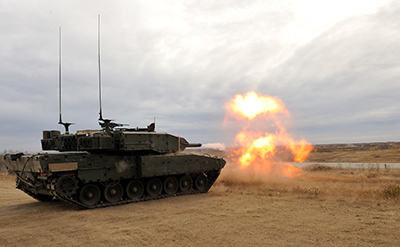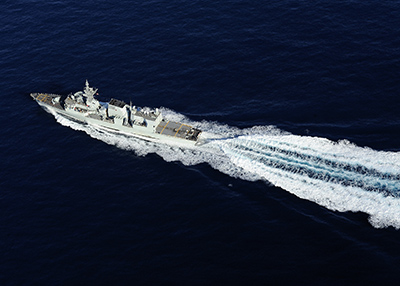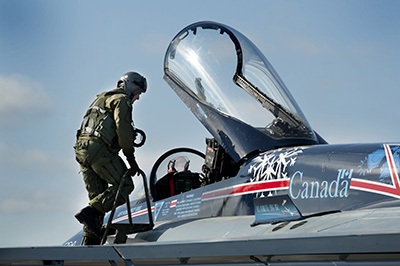Commentary

DND photo WT2012-0177-006 by Corporal Tina Gillies
Tank live fire
Warrior Nation?
by Martin Shadwick
For more information on accessing this file, please visit our help page.
“For an increasingly vocal set of commentators,” notes Jennifer Welsh in a thought-provoking analysis in the June 2012 Literary Review of Canada, “the tendency of the Harper government to elevate our experience in armed conflict and to depict the world as one marked by danger and epic struggle is part of a broader campaign to transform Canada into a ‘warrior nation’.” Orchestrated by right-wing elements within the government, the military, academia and the media, the perceived “militarization” seeks to “fundamentally shift how Canadians think about their country and its history.” Part and parcel of this campaign, as controversially portrayed by Ian McKay and Jamie Swift in Warrior Nation: Rebranding Canada in an Age of Anxiety (Between the Lines, 2012) and Noah Richler in What We Talk About When We Talk About War (Goose Lane, 2012) are attempts to marginalize and belittle Canada’s peacekeeping role and legacy, and, as Welsh notes in her June 2012 review, “efforts to increase military spending, inculcate greater respect for soldiers and ‘martial values,’ rebrand Remembrance Day as a celebration of war and instil more muscularity into Canada’s foreign policy.”
Other perceived elements of the campaign - some explored, others not, by McKay, Swift and Richler - include the “militarization” of the Arctic (as reflected in more frequent military deployments in the north and the Harper government’s plans for a northern training centre, a naval refuelling facility, a fleet of Arctic Offshore Patrol Ships (AOPs), and other enhancements), the “militarization” of disaster relief (the substantial Canadian military response to the Haitian earthquake of 2010 was seen by some academics to have nefarious neo-colonial objectives), an increased military presence at citizenship and national sporting events, a much-enlarged military and military history component in Discover Canada (i.e., the study guide for would-be citizens of Canada), and efforts to promote the study of military and security issues at Canadian universities. Still other elements include a new generation of military recruiting ads (decried as inherently and deliberately misleading in some circles), Ottawa’s efforts to commemorate the bicentennial of the War of 1812 (“an enormous amount of money,” argued Dan Gardner of the Ottawa Citizen, for “propaganda so crude and jingoistic it would make old Victorian colonels roll their eyes”), the restoration of “Royal” to the official titles of Canada’s air force and navy, and, argues Noah Richler, the “forcefully imposed establishment sentiment” to “support our troops” in Afghanistan. Indeed, note some critics, the post-9/11 mission in Afghanistan provided Ottawa with a useful opportunity to jettison the notion that Canada’s armed forces could shovel snow in Toronto or keep the peace in Cyprus, but not engage in the heavy-lifting of real-world combat operations. Even the October 2012 rebranding of the Canadian Museum of Civilization as the Canadian Museum of History occasioned concern in some quarters. A Toronto Star editorial of 18 October 2012, for example, cautioned the Harper government to avoid turning the rebranded institution into “… a shrine devoted to glorifying the military and the monarchy.”
Many observers will reject the assertions and arguments of McKay, Swift, Richler et al as delusional, or, at the very least, grossly exaggerated. They would note, for example, that the precipitous decline in the number of Canadian military personnel assigned to United Nations peacekeeping operations pre-dated the arrival of the Harper government, and add that peacekeeping experienced some decidedly lean years under prime ministers as disparate as John Diefenbaker and Pierre Trudeau. On the so-called “militarization” of the Arctic, they would posit that the Harper plan for a northern training centre, a northern refuelling facility and six-to-eight AOPS would not in absolute terms have substantially increased the very modest number of regular force personnel stationed in the far north. Now, with all three projects descoped and/or significantly behind schedule, the notion of a “militarized” Canadian Arctic appears utterly bizarre. Moreover, as Welsh points out, “there are real questions” to be asked about the financial sustainability of McKay and Swift’s “warrior nation project.” For “some inconvenient data, one need only consult the 2012 Harper budget, which illustrates that the regular rises in defence spending that have occurred over the past five years are at an end.” A financial brick wall that will spell further noteworthy reductions in Canada’s military capabilities hardly appears consistent with the “warrior nation” hypothesis.
Some observers may well accept the argument that “peacekeeping” has been downplayed in recent years, but argue that it was vitally important to disabuse ill-informed Canadians - whose grasp of Canadian diplomatic and military history is at best shaky - of the history-defying myth that peacekeeping has constituted their country’s only military role on the global stage. Equally, if not more important was the perceived need to remind Canadians that a multi-purpose defence establishment exists to meet a broad range of commitments, be they non-military, quasi-military or military in nature, and that the latter may, on occasion, involve combat. The ability to apply, or to threaten to apply, force on behalf of the nation state and duly constituted international authority remains a central consideration in foreign and defence policy. Even Pierre Trudeau’s 1971 white paper on defence, for all its attention to non-military and quasi-military roles - including the counting of caribou in the Arctic - acknowledged the continuing requirement to maintain a combat capability. Moreover, if the newly-enhanced visibility and reduced isolation of the Canadian Forces means that Canadians now have a closer affinity with the men and women of their armed forces, is that necessarily a bad thing in a democracy? Similarly, they would ask, is it inappropriate to require would-be citizens to learn a little more about their new country’s diplomatic and military history?

DND photo ET2012-6065-04 by Corporal Brandon O’Connell
Canadian Forces warship
Critics of the broader “militarization” and “warrior nation” hypotheses of these books are unlikely to be mollified by many of the micro-level recommendations and findings of Richler, McKay and Swift. A staunch defender of peacekeeping and peace operations, Richler advances “… a forward-looking plan made up of three related components that, in their interrelations and their entirety, would constitute a uniquely Canadian way of preserving the humanitarian internationalist tendencies that are the true target of these critics’ complaints.” The measures would embrace “the creation of a new regiment under the aegis of the DND that was dedicated specifically to the practice of peace operations rather than wars of existence,” a “new college in which at least a minor degree in some form of peace operations was a necessary condition to graduate” and “the creation of a national community corps complementing the new regiment in its developmental activities in foreign territories but also at home.” The “… point of a separate Peace Operations (PO) Regiment would be to create a specialized Canadian military force acting as a third party and designed for the particular tasks and challenges of conflict resolution in global theatres in which Canadian interest, not self-interest, is the motivation.” It would, “… like the regular military, be fully equipped and fully trained and subject to the same rigorous standards of universal service.” Richler contends that the “… existence of the regiment would undermine the confusion of war-fighting and humanitarian operations that has allowed the pro-military lobby to argue that ‘when Canada does peacekeeping, it’s really doing peacemaking or peace enforcement, both of which are just synonyms for war’.”
Richler’s proposal - not new in its fundamentals - is intriguing, but raises both practical and philosophical difficulties. With only one such peace operations regiment, presumably with one or two battalions, how would Canada respond to peace operations requiring more than one or two rotations? A de facto two-tier army composed of regular and peace operations units would inevitably face a complex brew of morale, training and personnel issues. Moreover, as Welsh notes, Richler’s characterization of peacekeeping and peace operations centres on “negotiation and nation building,” thereby forgetting “… not only that very particular, liberal values inspire those activities, but also that the ‘just peace’ (his words) he seeks to promote globally is based on a contestable view of justice. So while he may be right in saying that peacekeeping, even in its more muscular form, is not synonymous with war (despite the wish of some Harperites to make it so), it does implicate peacekeepers in activities beyond ‘tempering’ and ‘adjudicating’.”
In advancing their hypothesis, McKay and Swift offer questionable interpretations of DND’s Security and Defence Forum (SDF), higher military education, and the so-called “military-entertainment complex.” For example, they posit that “… what appears to be a spontaneous increase in academic fascination with things military has been deliberately cultivated and funded by the state” via the “powerful” Security and Defence Forum (SDF). This interpretation appears to ignore the age of the Security and Defence Forum (and its predecessor), and exaggerate its importance - if it was all that powerful and influential, why has it recently lost most of its budget and been shorn of most of its original raison d’etre? Indeed, McKay and Swift’s own case might have been better served by arguing that the SDF has been deliberately dismembered in an attempt to blunt academic criticism of Canadian defence policy or the pursuit by academics of innovative, non-traditional approaches to international peace and security. Their attack on higher military education, in part rooted in the belief that the military “acquires legitimacy through the academy,” and, in part, presumably, because higher education helps to produce more effective war-fighters, is equally suspect. One would have thought that a better educated officer corps would have been a partial antidote to some of the broader concerns voiced by McKay and Swift. They also argue that the “Highway of Heroes, the ubiquitous yellow ribbons, the talk of coming of age at Vimy Ridge, [and] Remembrance Day” have become “politically charged elements of a military-entertainment complex extolling the new cult of the warrior hero.” There is some validity in their unease - the term ‘hero’ has become far too ubiquitous - but, really, a military-entertainment complex?
There are noteworthy areas of commonality in these books. Of the two, Richler’s is more tightly focused than its counterpart and, arguably, less shrill in its analysis. Its lament for the loss of Canada’s peacekeeping legacy will find more than a modicum of acceptance - not least from this defence analyst - even if its prescribed corrective measures, such as a dedicated peace operations regiment, appear suspect. The McKay and Swift book is a much weightier tome, and taps into a quite astonishing array of historical and contemporary data. Both adopt inherently controversial positions, and their hypotheses will no doubt be rejected out of hand in some quarters. It would, however, be a serious error in judgment to ignore the thought-provoking themes and arguments put forward by Richler and McKay and Swift. Their assertions should not be unthinkingly rejected, even though their interpretations, particularly in Warrior Nation, are at times overblown (and, ironically, undermined) by counter-productive histrionics. One might posit, as well, that some of the developments they condemn more often reflect a coincidental confluence of events than a deliberate right-wing strategy to rebrand the nation.
Moreover, as Welsh in my view has correctly observed, “… the debate about militarization under Harper is an unhelpful distraction from a much more important story about the profound changes that have taken place in the nature of armed conflict. It is this transformation, and its implications for Canada, that should be the focus of our attention.” Welsh identifies several transformations of note, but draws particular attention to international data suggesting steady declines in both inter-state and intra-state conflict. This, she notes, “… does not mean that national armed forces, to safeguard our sovereignty and security, are a relic of the past. But it does mean that we need to talk not only about Canada’s history of war, and the mistakes of current wars such as Afghanistan, but also of what war is likely to look like for our children and grandchildren.”
Martin Shadwick teaches Canadian defence policy at York University. He is a former editor of Canadian Defence Quarterly.

DND photo BN2012-0080-03 by Corporal Pierre Habib
Pilot boarding CF-18







